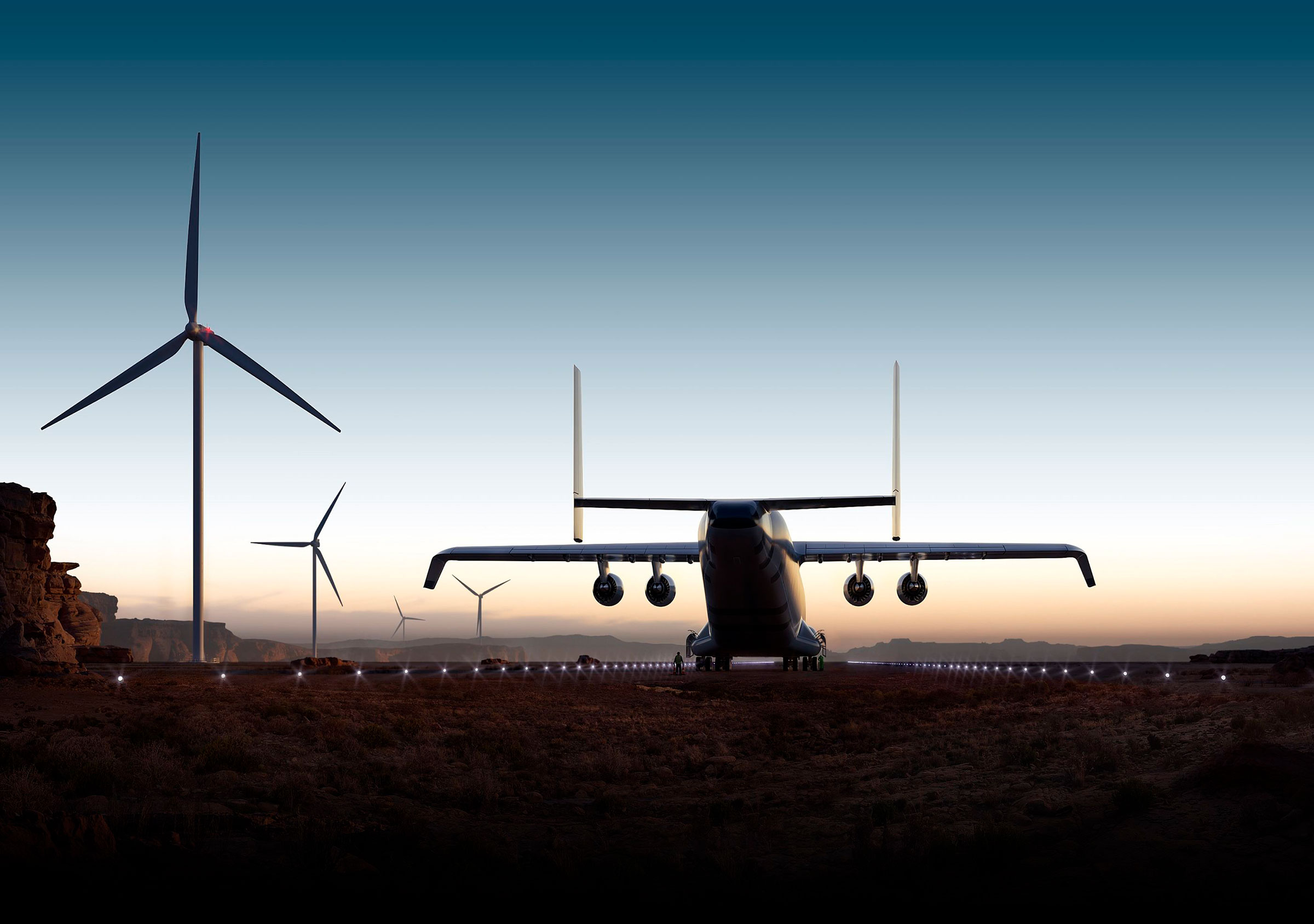
When it takes to the skies, the Radia WindRunner will be the world’s largest cargo plane. The entrepreneurs behind Radia created it for one reason: to facilitate the shipping of gigantic wind blades to challenging locations.
The plane is a behemoth with a volume ten times greater than that of a 747 and a cargo hold capable of carrying a nearly 350-ft blade. Because wind farms are typically built in remote locations, the plane will also be capable of landing on short, unpaved airstrips.
As fascinating as it is, what’s most interesting about Radia to me isn’t the aircraft itself. Indeed, founder and CEO Mark Lundstrom told me over coffee that he directed the company’s engineers to follow the mantra of “do nothing new.” The plane is built using existing technologies to ease the engineering and subsequent certification process.
The business model, however, is new. Radia will be an energy company, building clean energy projects, says Lundstrom. Its fleet of cargo planes will simply give it a strategic advantage. “Think of us as an energy company, but with a unique way to supersize turbines,” he says.
And those wind projects are only the cornerstone in Lundstorm’s vision of a much bigger energy company. Lundstrom hopes to co-locate the turbines with facilities that produce hydrogen fuel so that Radia’s wind power can power the production of low-cost green hydrogen. “We manage this fascinating ecosystem,” he says. “We're literally connecting aerospace companies to molecule makers.”
In time, other competitor airplanes may enter the market, but Radia has a head start. The company operated in stealth mode for seven years, raising venture capital money, getting the engineering right on the plane, and collaborating with launch partners, before revealing the WindRunner in late March. Eventually, Lundstrom says, the company could have hundreds of planes crisscrossing the skies. “We will get a head start and be able to enjoy those initial economics,” says Lundstrom.
So often energy and climate technology conversations can get stuck on the market as it exists today. And even innovation is often portrayed as somewhat straightforward. Wind turbines get bigger. Solar panels become more efficient.
Radia is a great example of how an innovation can totally shift the landscape of an existing market. When it comes to wind energy, bigger blades are better than their smaller counterparts. Larger wind turbines can work in a wider range of conditions, meaning they have less down time than their smaller counterparts. But the biggest wind turbines are as long as a football field and simply too big to be transported to the fields and deserts where they are typically installed. The result: many developers have taken for granted that the biggest blades will only work for offshore wind projects.
Radia quickly changes those assumptions and, in doing so, can shift the economics of onshore wind projects. While onshore wind is already relatively cheap compared to alternatives, bigger turbines will drive down the cost further opening new areas to wind development. “If you can significantly increase the profitability of a renewable project, more money will flood into renewables,” Lundstrom says.
Leaving my conversation with Lundstrom, I couldn’t help but wonder what other company in stealth mode might shake up the climate technology marketplace next.
More Must-Reads From TIME
- The 100 Most Influential People of 2024
- Coco Gauff Is Playing for Herself Now
- Scenes From Pro-Palestinian Encampments Across U.S. Universities
- 6 Compliments That Land Every Time
- If You're Dating Right Now , You're Brave: Column
- The AI That Could Heal a Divided Internet
- Fallout Is a Brilliant Model for the Future of Video Game Adaptations
- Want Weekly Recs on What to Watch, Read, and More? Sign Up for Worth Your Time
Write to Justin Worland at justin.worland@time.com